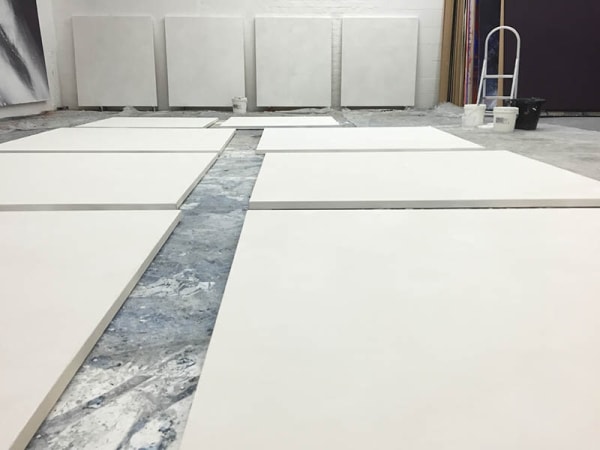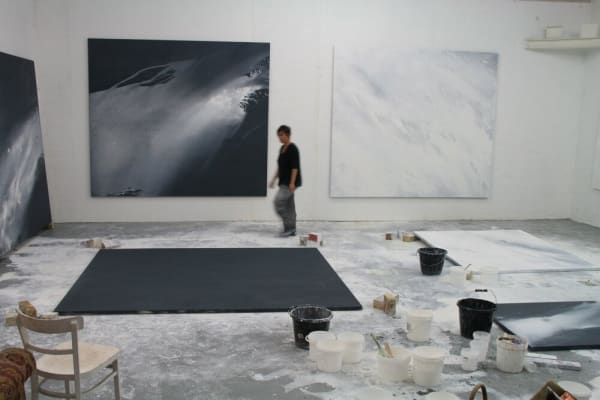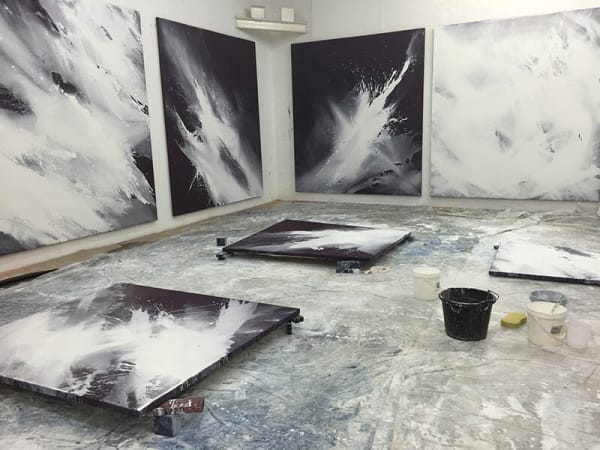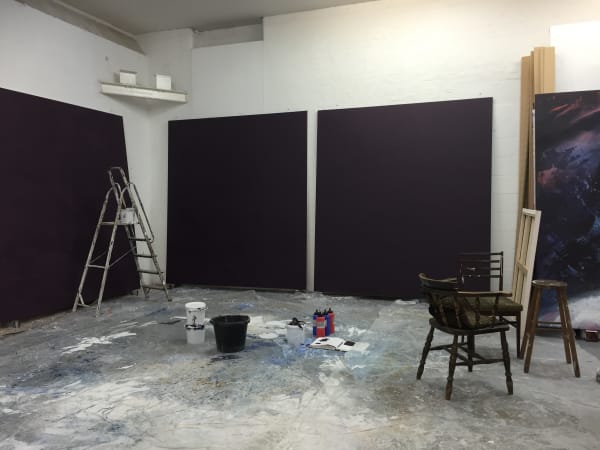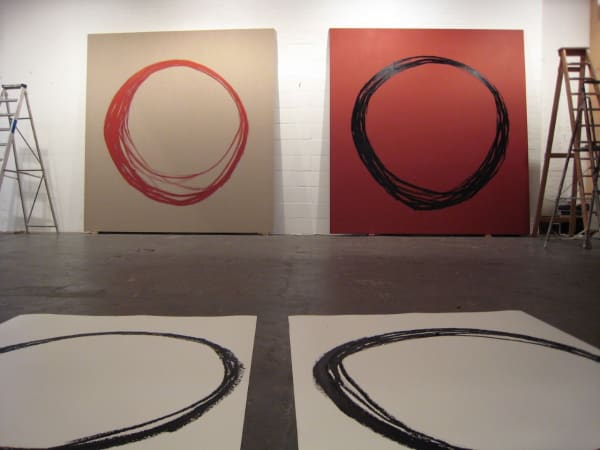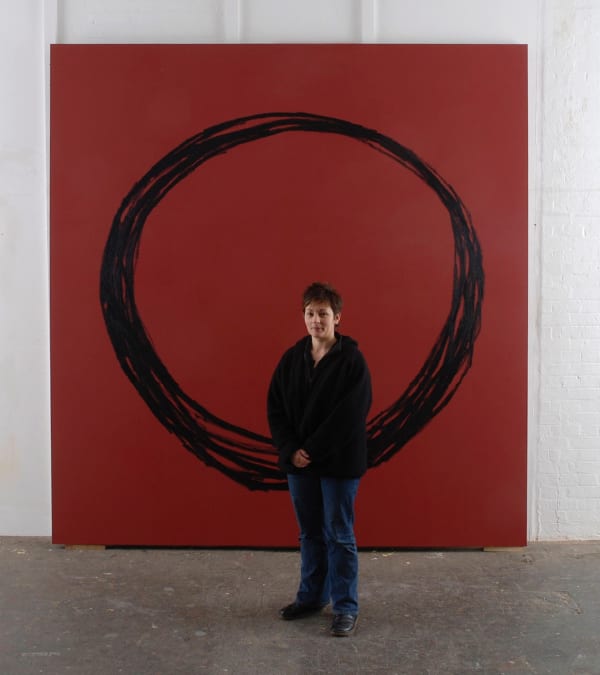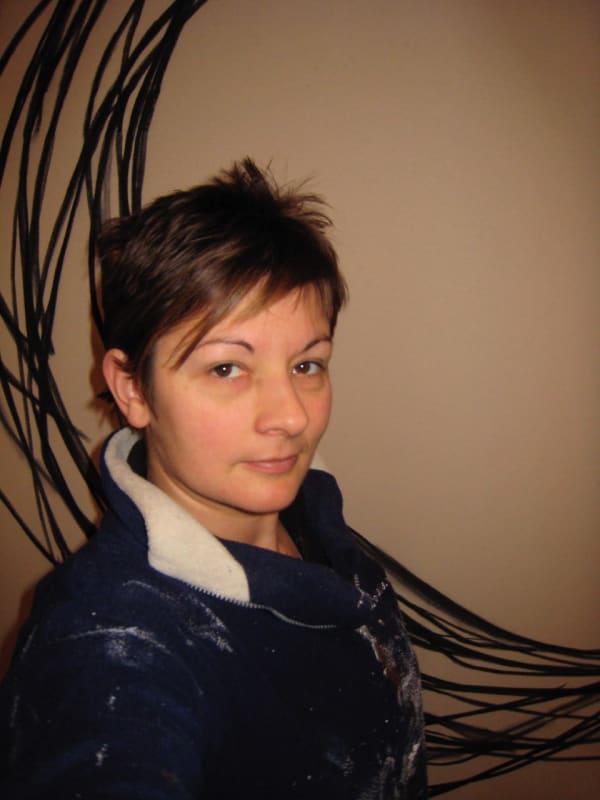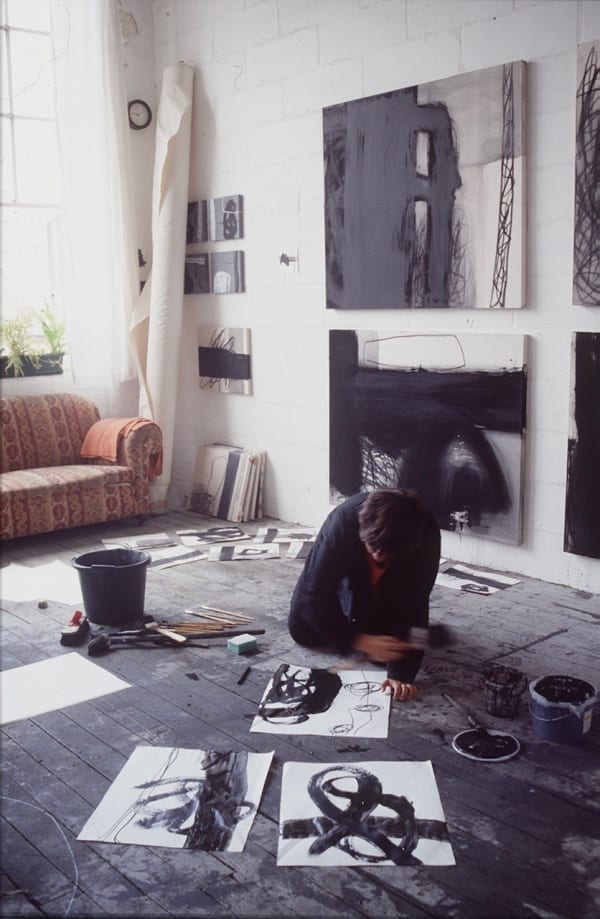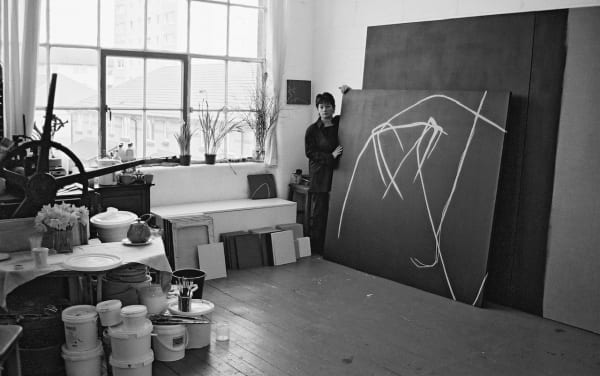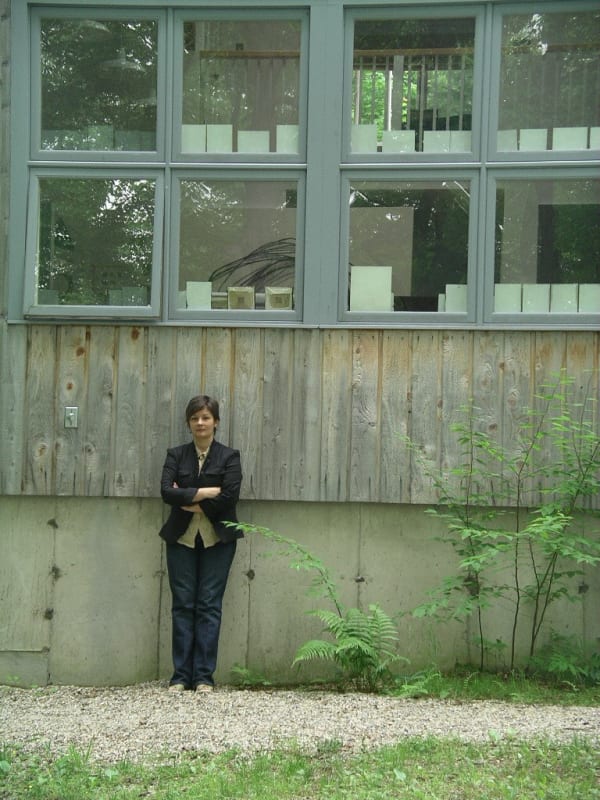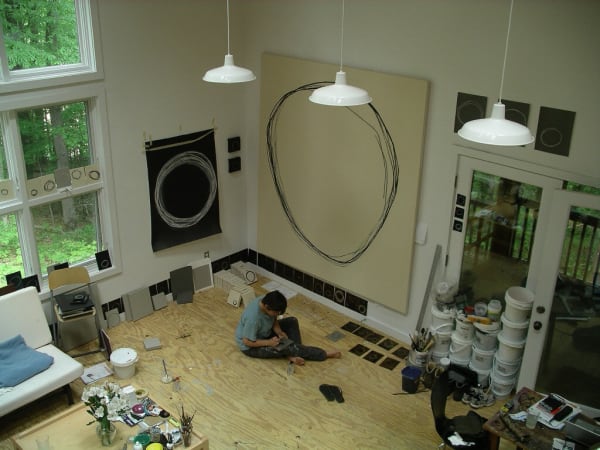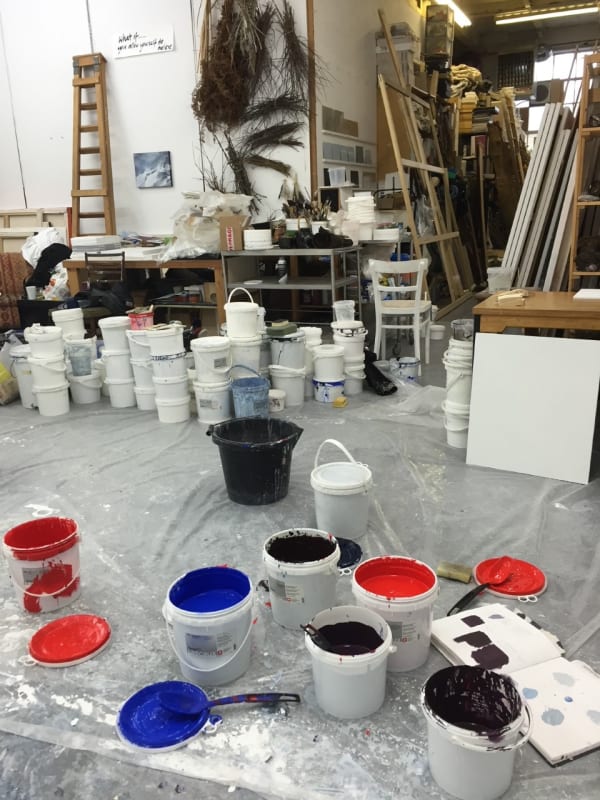HIStoRY
Calinescu has worked on a large scale since the late '80s and her studio requirements have always been dictated by this. Her first studio, rented whilst still a student at the Royal Academy of Art, was a purpose built timber structure at the end of a painters garden in Tulse Hill. Surrounded by trees, and with a ceiling height well in excess of 4m, it gave her the freedom to work in private and push beyond the boundaries of the studio restrictions within college. Her transition, on leaving the Royal Academy after 7 consecutive years in full time art education, was made considerably easier as she had a familiar place to work and was already used working alone.
Having been diagnosed with ME and CFS in 1993, post Glandular Fever in 1988, it became necessary for her studio to be closer to home. A section of the Camberwell Bus Garages had become redundant and was being set up as a new studio complex. It had the height she required and, by becoming involved in the project in the early stages, Calinescu was able to mark out the space she needed.
Acutely aware that many of the studio complexes in south London were closing, Calinescu spent several years actively looking for a freehold building to purchase. The smallest, a former Royal Mail sorting office for four, the largest, a single storey 22,000sqft building in Spa Road owned by Southwark Council which would have enabled her to set up the kind of studio complex she wished to be a part of. But when your intention is to provide really affordable studios for artists, conversations along the lines of "if you can match the offer on, AND under, the table it is yours" make you realise how hard this is to achieve.
In the late '90s Calinescu was offered a 525 sqft 1st floor studio at Acme's Deptford studio complex. The ceilings were a little lower, but the light was beautiful. The doors and stairwell still allowed a good scale of work to be moved in and out and so she took it.
Calinescu has always worked in series but during her time in this studio her need to explore ideas, to allow the dialogue between the work to flow backwards and forwards, became even stronger. Multiple pieces of work on paper, and small canvases lead to a series of 40 pieces on canvas that she referred to as "creating an alphabet". These lead to a series of 208 x 228cm drawn and painted canvases, spanning a two year period. And now the restrictions of the size of her studio was clearly an issue. There is a natural freedom when "playing" on multiple canvases and, of course, especially so on a smaller scale. When something doesn't work you can simply set it aside and turn to the next. This means the energy, dialogue and flow continue. Of course the material and physical cost of preparing the small canvases is also considerably less which psychologically plays a part. What Calinescu wanted to do was to have a space where she could create this sense of freedom across a number of large canvases….in her mind 12, lined up around the studio.....all ready to go.
In 2005 Calinescu received a letter from the Josef and Anni Albers Foundation asking if she would like to spend some time there as artist in residence. She was delighted to accept and dates were set for the following year.
Actively looking for a larger studio she became aware that Sean Scully's ground floor studio was going to become available. 1700 sqft and with 4m high ceilings she decided to take it. The timing felt right and it was agreed that she would move in on her return from the Albers Foundation in July 2006. The additional space gave her exactly what she had hoped for and it has been a productive fifteen years. The studio has more than served its purpose.

